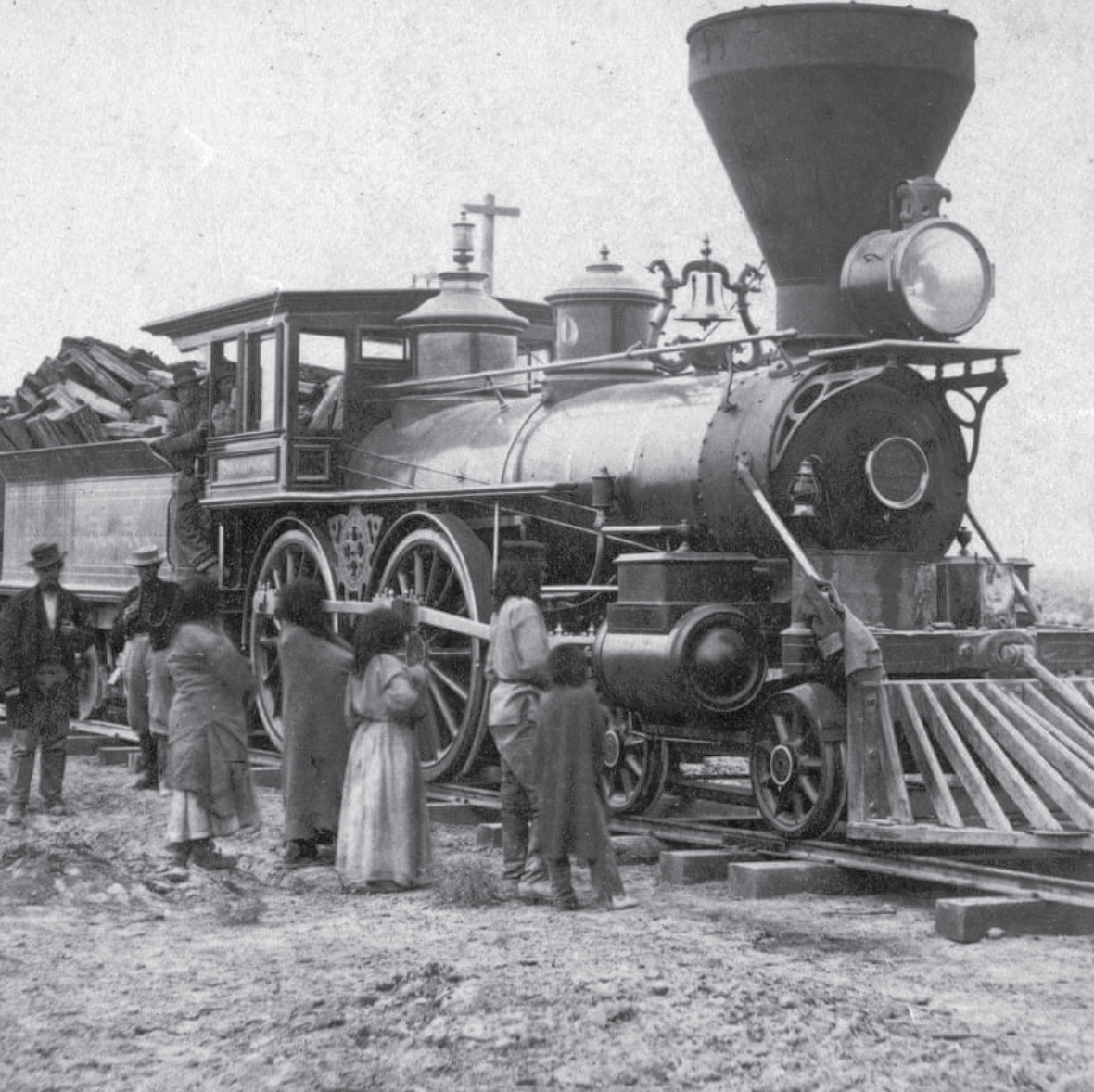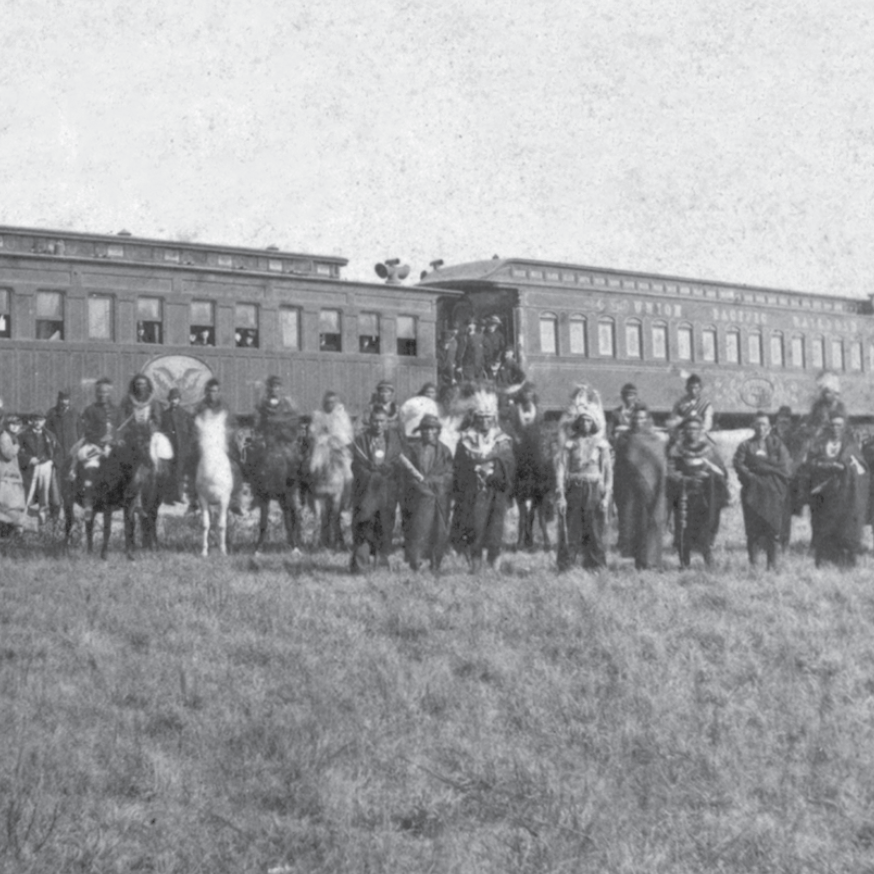Shoshone Indians
Photograph, 1868–1869
Andrew J. Russell, American, 1829–1902
Union Pacific photographer Andrew J. Russell photographed this group of Shoshone Indians as he documented the line before and after the completion of the Transcontinental Railroad.
Courtesy of the Beinecke Rare Book & Manuscript Library, Yale University
Building the Central Pacific and Union Pacific railroads harmed and displaced scores of American Indian tribes, including the Cheyenne, Sioux, Arapaho, Shoshone, and Paiute, by altering natural resources or taking native lands.
American Indians mostly resisted the railroad’s construction to defend their independence and way of life. There were, however, tribes who worked on or offered support for its construction, including the Paiute for the Central Pacific and the Pawnee for the Union Pacific.
Exacerbated by 30 years of mass overland migration, dozens of settlements pushing westward, and the presence of the U.S. Army, the Union Pacific and the U.S. Government benefited from long-held inter-tribal conflicts (between the Pawnee, the Sioux, and other tribes) by hiring hundreds of Pawnee, who protected the road’s construction along with the U.S. Army.
During the 150th anniversary of the Transcontinental Railroad, the Spike 150 Commission acknowledges the impact and suffering of those American Indians, displaced in the building of this railroad.

Shoshone Indians Looking at Locomotive on Desert
Photograph, 1868
Alfred A. Hart, American, 1816–1908
On the Humboldt Nevada plains, Alfred A. Hart photographed Shoshone Indians studying the Central Pacific locomotive while railroad workers look on.
Courtesy of the Union Pacific Museum
Shoshone Indians Looking at Locomotive on Desert
Photograph, 1868
Alfred A. Hart, American, 1816–1908
On the Humboldt Nevada plains, Alfred A. Hart photographed Shoshone Indians studying the Central Pacific locomotive while railroad workers look on.
Courtesy of the Union Pacific Museum



